Upgrading Older Homes With Smart Home Technology: A Seamless Integration Guide
Upgrading older homes with smart home technology may seem daunting, but it doesn’t have to be. Surprisingly, a significant percentage of homeowners feel overwhelmed when faced with integrating new devices like sensors and smart assistants such as Amazon Alexa into traditional settings. This guide will help you navigate common challenges by covering essential topics like selecting the right devices, ensuring minimal disruption during installation, and maintaining your home’s aesthetic. By following these steps, you’ll gain the confidence needed to enhance your living space, address issues such as leaks, and improve efficiency, ultimately enriching your home’s functionality.
Understanding the Challenges of Integrating Smart Tech Into Older Homes
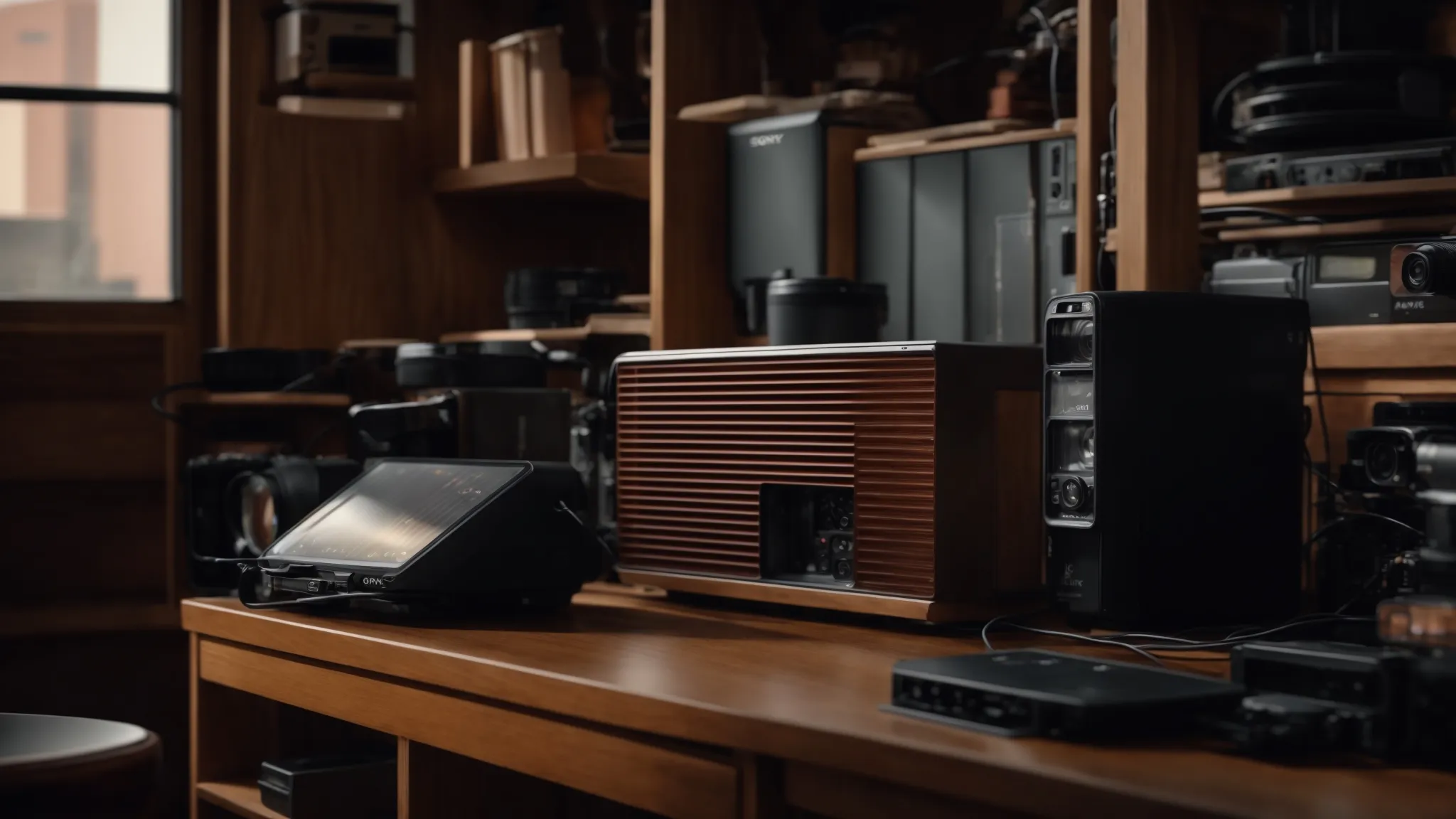
Integrating smart technology into older homes presents several challenges. First, I’ll assess the current electrical infrastructure, as older systems may not support modern demands. Then, I’ll identify compatibility issues with existing devices, including doorbells and pill dispensers. Structural limitations also play a role, alongside ensuring Wi-Fi connectivity throughout the home while addressing specific security concerns related to ageing buildings.
Assessing the Current Electrical Infrastructure
When I assess the current electrical infrastructure of older homes, I often find that outdated wiring can be a significant challenge to integrating smart home technologies. Many older systems aren’t designed to handle the demands of the internet of things, which can lead to issues with device functionality and performance. Additionally, ensuring reliable power for smart devices, particularly for elderly individuals with cognitive impairment, is crucial for enhancing adherence to health routines, such as blood pressure monitoring, which family caregivers may need to manage effectively in these homes.
Identifying Compatibility Issues With Existing Systems
When integrating smart technology into older homes, I frequently encounter compatibility issues with existing systems. For example, older door locks may not easily sync with smart locks or voice assistants like Google Assistant, which can lead to frustration and reduced functionality. Furthermore, it’s important to consider how these systems can support daily activities of daily living for elderly residents, especially in managing health metrics such as heart rate or fatigue levels, ensuring that technology serves a practical purpose in their lives.
Overcoming Structural Limitations
Overcoming structural limitations in older homes can be daunting, but it’s essential for effective smart home integration. I’ve found that enhancing door accessibility with smart locks or incorporating motion detection systems can significantly improve safety and convenience. For example, pairing motion sensors with smart medical alert systems can ensure that individuals, including those with dementia, receive timely assistance or reminders for health monitoring tasks like checking blood pressure, which can contribute to better sleep and overall well-being.
Ensuring Wi-Fi Connectivity Throughout the Home
Ensuring reliable Wi-Fi connectivity throughout an older home is often one of the more pressing challenges I face when integrating smart technology. Many times, I find that the layout and structure of these homes can create dead zones where signal strength is weak. To address this issue, I recommend using a smart home hub that can distribute the Wi-Fi signal effectively, or employing a handyman to install additional access points. This approach not only enhances the performance of devices like touchscreen interfaces but also improves the overall safety and convenience for residents, especially those with disabilities who rely on technology for daily support.
Addressing Security Concerns Specific to Older Buildings
Addressing security concerns in older buildings, especially for older people, requires careful consideration of both physical and smart technology barriers. One effective solution I’ve implemented is the installation of panic buttons in critical areas, such as the bathroom, where falls are more likely to occur. This integration of automation not only enhances safety but also aligns with medicare requirements to promote independent living, ensuring that help can be summoned quickly if needed.
Selecting the Right Smart Home Devices for Traditional Settings
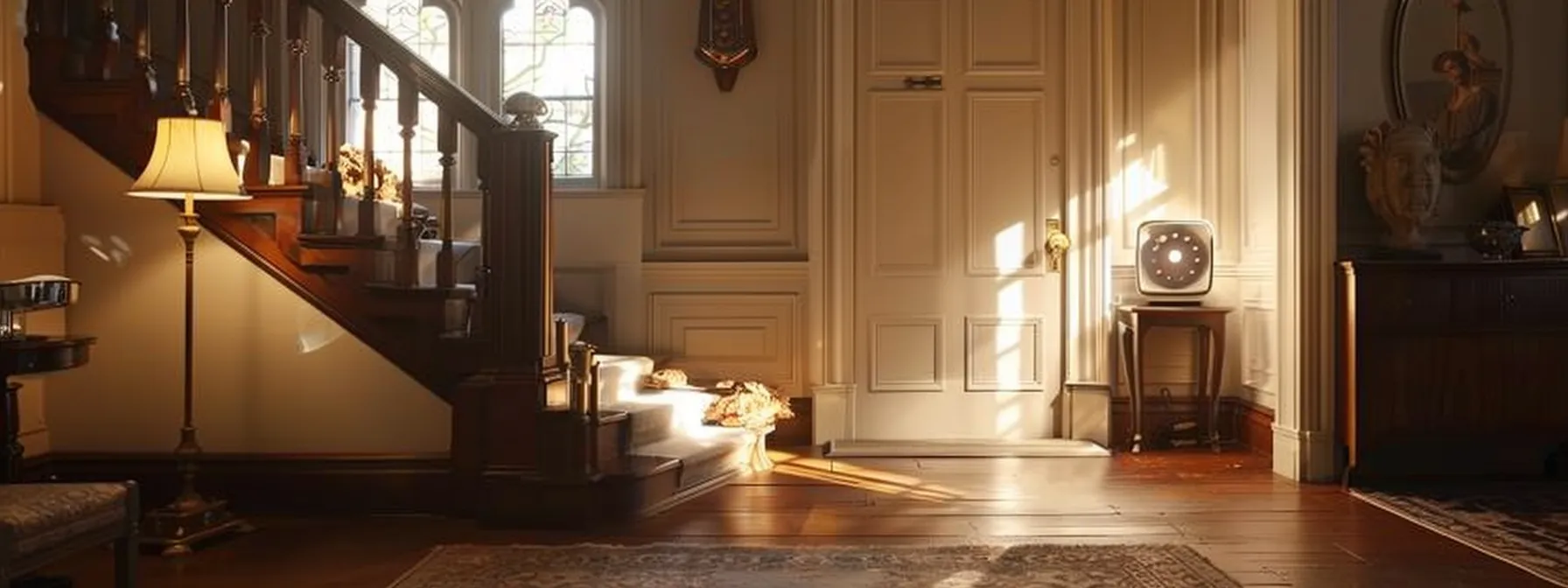
Choosing the right smart home devices for older homes involves a careful balance between functionality and aesthetics. I focus on selecting devices that seamlessly blend with classic interiors while prioritizing essential upgrades that make an immediate impact. Evaluating compatibility with existing systems ensures longevity and integration, while budget-friendly options make smart technology accessible. Finally, considering energy efficiency aligns with sustainable practices, creating a cohesive environment that enriches everyday living.
Choosing Smart Devices That Blend With Classic Interiors
When I choose smart devices for older homes, I prioritize options that harmonize with traditional interiors while addressing the needs of elderly care. For instance, selecting smart thermostats that resemble classic designs can enhance comfort without compromising style. I also recommend integrating weight monitoring scales that provide health data in a user-friendly format, which can support home care for seniors by fostering cognition and promoting independence in managing their health.
Prioritizing Essential Smart Upgrades for Immediate Impact
When upgrading older homes, I prioritize essential smart upgrades that provide immediate impact, particularly for aging in place. For instance, installing smart smoke detectors enhances safety, alerting residents more effectively than traditional options. Additionally, incorporating fingerprint-enabled smart locks improves accessibility, allowing easier entry while maintaining security, which is crucial for those requiring assistance. Upgrading to smart stoves further enhances convenience in the kitchen, as these can be controlled remotely, ensuring that meals are prepared safely and effectively.
- Install smart smoke detectors for enhanced safety.
- Incorporate fingerprint-enabled smart locks for improved accessibility.
- Upgrade to smart stoves for convenience in meal preparation.
Evaluating Device Compatibility and Future-Proofing
When I evaluate device compatibility for older homes, I focus on how well new technology can seamlessly integrate with existing systems. For instance, incorporating a smart thermostat requires ensuring that it can work alongside any current heating or cooling systems without conflicts. Additionally, I consider future-proofing by selecting devices that can adapt to innovations, such as remote patient monitoring systems, which can track vital signs and provide the autonomy needed for elderly residents to maintain their independence.
- Assess existing systems for compatibility with smart devices.
- Choose technology that adapts to future innovations.
- Incorporate solutions that enhance autonomy for seniors.
Budget-Friendly Options for Beginners
When I consider budget-friendly options for integrating smart home technology into older homes, I often recommend devices that enhance both welfare and mental health without breaking the bank. For instance, affordable smart vacuum systems can help maintain clean living spaces, reducing the risk of falls due to clutter. Additionally, simple smart health monitoring devices are accessible and can greatly contribute to the overall well-being of seniors, making it easier for them to remain independent in their own homes rather than transitioning to a nursing home.
Considering Energy Efficiency and Sustainability
When I consider energy efficiency and sustainability in the context of upgrading older homes, selecting devices that meet modern technical standards is essential. For instance, integrating a Nest thermostat can significantly optimize heating and cooling behaviors, providing both convenience and cost savings for consumers. Additionally, using smart speakers can facilitate energy management by allowing voice-activated control of various devices, allowing residents to seamlessly adjust their energy consumption to promote sustainability.
| Device | Purpose | Benefits |
|---|---|---|
| Nest Thermostat | Optimize heating and cooling | Cost savings, energy efficiency |
| Smart Speaker | Control various devices | Convenience, energy management |
Step-by-Step Guide to Installing Smart Systems in Older Homes
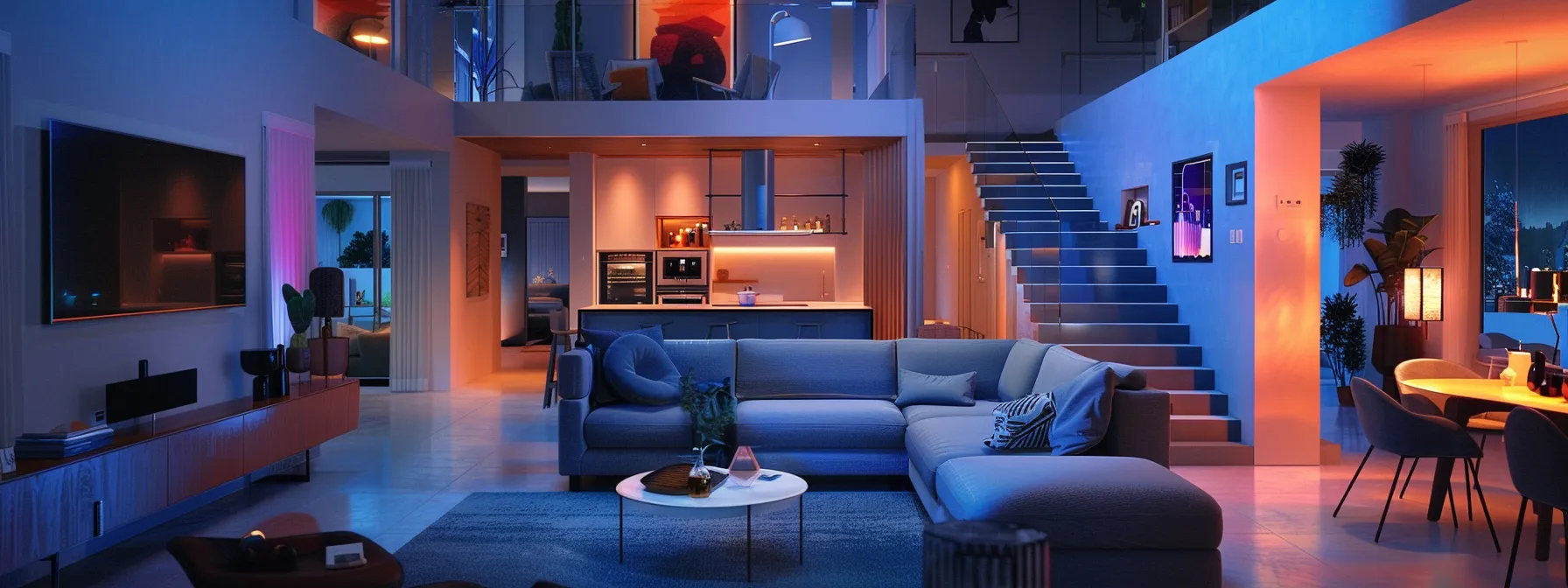
In this guide, I will walk you through the step-by-step process of installing smart systems in older homes. We’ll begin by planning your smart home upgrade project, ensuring an organized approach. Next, I’ll cover prepping your home for installation, followed by installing wireless smart lighting solutions that enhance convenience. Then, we’ll set up smart thermostats and climate control, and finally, I’ll guide you through integrating smart security systems to protect your home effectively. Each step is crucial for creating a seamless and functional smart home environment.
Planning Your Smart Home Upgrade Project
When planning your smart home upgrade project, it’s essential to consider the specific needs of the residents, especially those who may require physical therapy or have specific health goals like weight loss. For example, integrating devices like the Amazon Echo not only enhances home automation but can also provide reminders for physical activities that alleviate stress. Additionally, laying out a comprehensive plan for a home security system can ensure peace of mind, as it enhances both safety and accessibility for aging residents, helping them maintain their independence while staying connected to their support network.
Prepping Your Home for Installation
Prepping your home for the installation of smart systems starts with a comprehensive assessment of your current infrastructure. I recommend checking your electrical outlets and wiring to ensure they can support the energy demands of smart devices, which is crucial for reliable performance. Additionally, understanding how the devices will be controlled through a mobile app can enhance your knowledge and perception of the overall setup, while monitoring aspects like oxygen saturation in health-focused systems requires clear communication on how these technologies will integrate into your daily routines.
Installing Smart Lighting Solutions
Installing smart lighting solutions in older homes can significantly enhance usability while contributing to improved safety. I recommend starting by researching compatible smart bulbs that can seamlessly integrate with existing fixtures without requiring extensive rewiring. By connecting the lighting to a mobile device, residents can easily control their home’s ambiance, even allowing integration with security systems to ensure lights automatically activate during suspicious activities, which is particularly useful for elderly residents concerned with safety regarding potential threats, including carbon monoxide alarms that reinforce peace of mind:
- Research compatible smart bulbs for existing fixtures.
- Connect lighting to a mobile device for easy control.
- Integrate with security systems for enhanced safety.
- Consider carbon monoxide alarms to address safety concerns.
Setting Up Smart Thermostats and Climate Control
Setting up smart thermostats for climate control in older homes requires careful attention to compatibility and functionality. I recommend choosing devices that can integrate with existing heating and cooling systems without requiring major modifications. By utilizing these thermostats, residents can manage their environments efficiently, which not only enhances comfort but also supports telehealth measures by allowing users to control temperatures that promote optimal conditions for therapy sessions and medication adherence, creating a more conducive atmosphere for assisted living and daily entertainment activities.
Integrating Smart Security Systems
Integrating smart security systems in older homes is a vital step, especially for residents in geriatrics who may deal with challenges like mild cognitive impairment. I often recommend installing a smart doorbell paired with an Amazon Echo Show, which not only enhances security but also allows residents to see and communicate with visitors from anywhere in the home, fostering a sense of safety and independence. By setting up these smart devices, families can enjoy peace of mind, knowing that their loved ones are better protected without complicating their daily routines.
Wireless Solutions for Minimal Home Disruption
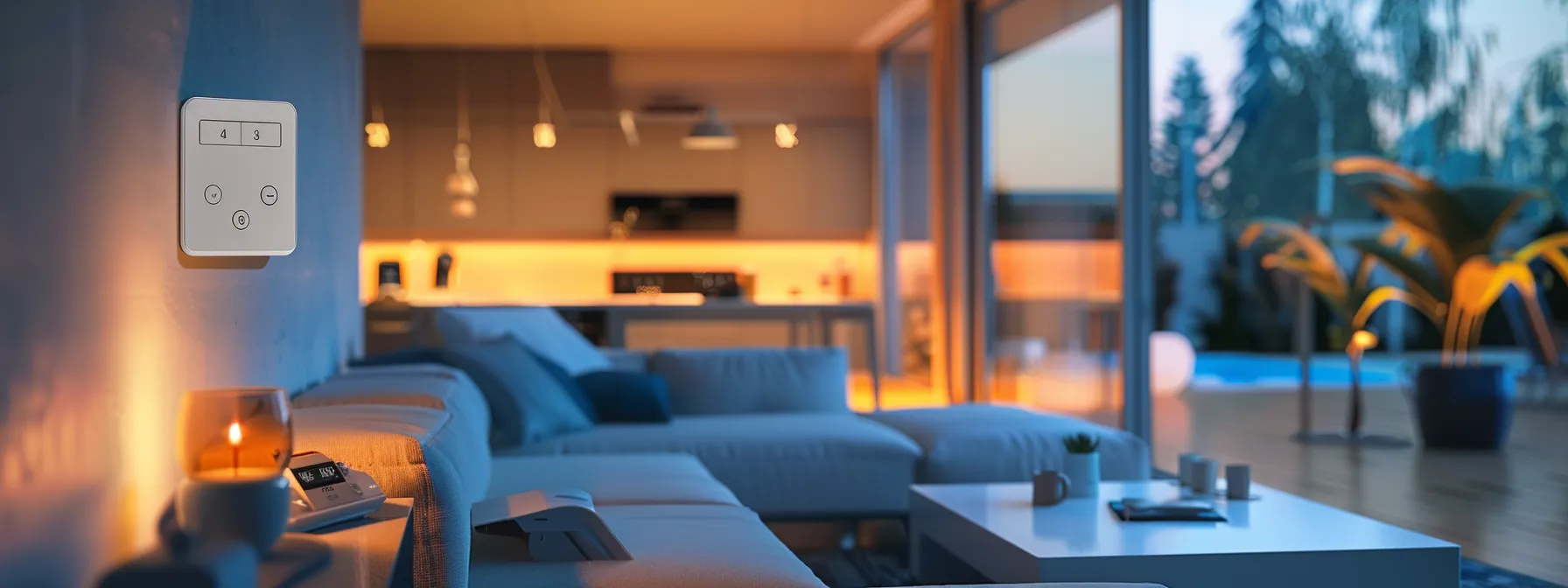
In upgrading older homes with smart home technology, leveraging wireless solutions is essential for minimizing disruption. I emphasize the benefits of wireless smart systems, such as the ease of installation and improved flexibility of remote control. I will guide you on choosing the best wireless protocols, implementing smart plugs and sensors, utilizing smart hubs for seamless control, and tips for enhancing wireless signal strength. These insights will address concerns like security and energy efficiency, vital for both family members and first responders, with additional focus on AARP recommendations for older adults.
Benefits of Wireless Smart Systems
Wireless smart systems offer a flexible and unobtrusive solution for upgrading older homes, addressing key needs like home security and daily convenience. For instance, a smart camera can be easily installed without the need for invasive wiring, providing peace of mind for those concerned about safety. Additionally, these systems can also aid individuals managing chronic conditions by utilizing smart appliances for cooking, ensuring they have healthy meals prepared without hassle, all while simplifying the authentication process for accessing their devices securely.
- Flexible installation without invasive wiring
- Enhanced home security with smart cameras
- Support for chronic condition management with smart cooking appliances
- Simplified authentication for secure access to devices
Choosing the Best Wireless Protocols for Your Home
When I choose the best wireless protocols for upgrading older homes, I focus on how well each option supports the unique needs of the residents. For instance, Philips Hue lighting is a fantastic option for easy integration and remote control, allowing users to adjust their home’s ambiance effortlessly. Similarly, using Google Nest devices can enhance disease management efforts by facilitating communication with healthcare professionals through voice commands, while smart vacuum cleaners help maintain cleanliness without additional effort from patients.
| Wireless Protocol | Features | Benefits |
|---|---|---|
| Philips Hue | Smart lighting control | Easy integration and remote access |
| Google Nest | Voice-activated assistance | Improves disease management |
| Smart Vacuum Cleaner | Automated cleaning | Maintains cleanliness effortlessly |
Implementing Smart Plugs and Wireless Sensors
When implementing smart plugs and wireless sensors in older homes, I focus on enhancing convenience and safety for residents. For example, smart plugs can control devices like robotic vacuum cleaners, allowing for automated cleaning without the need for physical effort. Additionally, using wireless sensors to monitor humidity levels can help create a comfortable living environment, while also supporting health care needs by notifying caregivers about any significant changes in the home atmosphere.
Using Smart Hubs for Seamless Device Control
When I implement smart hubs for older homes, I find that they significantly simplify how residents manage various devices, including thermostats and emergency response systems. These hubs eliminate the need for extensive wiring, providing a streamlined solution that enhances intelligence and communication across devices. For caregivers, this integration enables quick access and control over home environments, ensuring that the needs of elderly residents are met efficiently, especially in emergency situations where every second counts.
Tips for Enhancing Wireless Signal Strength
To enhance wireless signal strength in older homes, I recommend strategically placing wireless routers and access points in central locations, away from thick walls or metal appliances like ovens that can interfere with the signal. Additionally, using Wi-Fi extenders can help eliminate dead zones, ensuring that vital devices such as medical alert systems maintain connectivity during emergencies. Regularly checking signal strength and adjusting the placement of devices based on physical activity patterns can also optimize performance, ensuring that buttons for alerts or reminders function reliably throughout the home.
Maintaining the Aesthetics of Older Homes While Upgrading

To maintain the aesthetics of older homes while upgrading with smart technology, I focus on various strategies. Concealing smart devices ensures a cohesive look, while incorporating tech into vintage décor allows functionality without compromising style. Customizing smart controls to match interior design and retrofitting traditional fixtures with smart capabilities enhances usability. I’ll also share examples of tasteful integrations that improve quality of life, such as motion and surveillance options, which can be essential for elderly care, in line with Medicare Advantage requirements.
Concealing Smart Devices for a Cohesive Look
When integrating smart devices into older homes, I emphasize the importance of concealing these technologies to maintain a cohesive and appealing aesthetic. One practical approach I’ve used is to hide smart speakers within existing décor, allowing them to blend seamlessly with traditional furnishings. Additionally, smart plugs can be tucked away behind furniture, preserving the vintage charm of the home while providing modern functionality. The Brothers Bloom has inspired me to think creatively about these enhancements, ensuring that upgrades do not detract from the enduring beauty of older architectural styles:
| Device | Concealment Method | Benefits |
|---|---|---|
| Smart Speaker | Incorporate into existing décor | Maintains aesthetic appeal |
| Smart Plugs | Position behind furniture | Preserves vintage charm |
Incorporating Smart Tech Into Vintage Décor
Incorporating smart technology into vintage décor can create a harmonious blend of modern functionality and classic aesthetics. I often recommend selecting devices that mimic traditional designs, such as smart lighting fixtures that resemble antique lamps or vintage-style smart thermostats that align with the home’s character. This approach allows homeowners to enjoy the benefits of smart home integration without compromising the unique charm of their older spaces.
| Device | Vintage Style Option | Benefits |
|---|---|---|
| Smart Light Fixture | Antique-Look Lamp | Enhances ambiance while offering modern control |
| Smart Thermostat | Classic-Design Thermostat | Combines style with energy efficiency |
Customizing Smart Controls to Match Interior Design
When customizing smart controls to match the interior design of older homes, I focus on selecting interfaces that harmonize with existing aesthetics while providing modern functionality. For example, I often recommend touchscreen panels and smart home apps that can be styled to reflect traditional designs or colors, ensuring they feel like a natural part of the environment. This approach not only enhances usability for residents but also maintains the home’s charm, allowing technology to integrate seamlessly without compromising its character.
Retrofitting Traditional Fixtures With Smart Capabilities
Retrofitting traditional fixtures with smart capabilities allows homeowners to embrace modern technology while preserving the unique character of older homes. In my experience, replacing standard light switches with smart dimmers can enhance lighting control without altering the aesthetic of vintage fixtures. By incorporating smart controls, such as voice-activated assistants or retrofit solutions for classic-style lamps, I find that residents can enjoy convenience and efficiency while maintaining the charm and appeal of their beloved spaces.
Examples of Tasteful Smart Home Integrations
One effective way I incorporate smart home technology into older homes is by selecting devices that enhance functionality while complementing classic aesthetics. For instance, I often recommend smart light fixtures that mimic the design of antique lamps, allowing homeowners to enjoy modern control without sacrificing the charm of their interior spaces. Additionally, using smart thermostats designed with vintage-inspired appearances ensures that the seamless blend of technology and tradition maintains the distinctive character of older homes.
Maximizing Benefits and Future-Proofing Your Smart Home
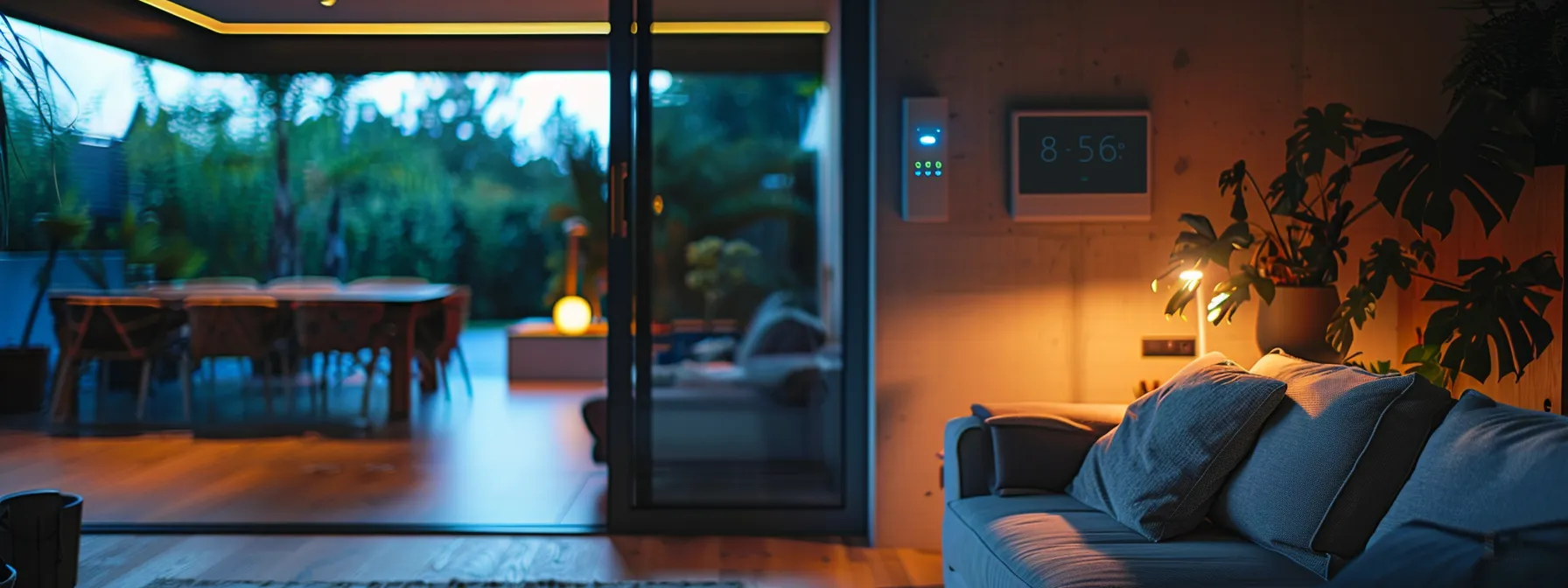
To maximize the benefits of integrating smart home technology into older homes, I focus on routine maintenance and software updates to ensure systems function efficiently. Expanding your smart home system over time involves preparing for new technologies and standards. It’s essential to educate household members on the use of smart devices and leverage smart home data for improved living conditions, making the experience more beneficial for everyone.
Routine Maintenance and Software Updates
Routine maintenance and software updates are critical for maximizing the benefits of smart home technology in older homes. I regularly advise homeowners to schedule updates for their devices to enhance functionality and security. By keeping software current, I can help ensure that smart systems operate smoothly and effectively, minimizing disruptions and maximizing usability, particularly for those who rely on technology for daily living.
Expanding Your Smart Home System Over Time
Expanding your smart home system over time is a practical approach that allows me to enhance functionality without overwhelming the existing infrastructure of older homes. I often recommend starting with a few essential devices and gradually adding more as needs grow or technology advances. For instance, beginning with smart lighting or security cameras can provide immediate benefits, while future additions like smart thermostats or advanced medical alert systems can be integrated seamlessly later on, ensuring a budget-friendly and manageable upgrade process.
- Start with essential devices like smart lighting or security cameras.
- Gradually add new devices as needs change or technology improves.
- Ensure that new systems are compatible with existing infrastructure.
Preparing for New Technologies and Standards
When preparing for new technologies and standards in smart home integration for older homes, I focus on staying informed about emerging innovations that could enhance reliability and performance. It’s vital to consider devices that not only meet current needs but can also adapt to future advancements. For instance, investing in smart devices that are compatible with new Wi-Fi standards ensures that the smart home will remain functional and efficient as technology continues to evolve:
- Research emerging technologies that enhance smart home systems.
- Prioritize devices that are compatible with upcoming standards.
- Choose solutions that can seamlessly integrate with future innovations.
Educating Household Members on Smart Tech Use
Educating household members about the use of smart technology is essential for maximizing the benefits of smart home upgrades in older homes. I prioritize creating straightforward guides and hands-on demonstrations that clarify how to operate devices like smart thermostats and security systems, as many residents may feel overwhelmed by new technology. By fostering an inclusive environment where everyone feels comfortable asking questions, I ensure that users of all ages can seamlessly integrate these tools into their daily routines, ultimately enhancing their quality of life and independence.
Leveraging Smart Home Data for Improved Living
Leveraging smart home data greatly enhances the living experience for residents in older homes. By integrating devices that monitor energy usage, I can help homeowners identify patterns and adjust their consumption, resulting in significant savings. For example, smart thermostats provide analytics on heating and cooling habits, allowing users to fine-tune settings for optimal comfort and efficiency, especially important for maintaining a conducive environment for seniors or those with health considerations.
Conclusion
Upgrading older homes with smart home technology significantly enhances safety, convenience, and efficiency for residents, particularly seniors. A thorough assessment of electrical infrastructures and careful selection of compatible devices ensure seamless integration while maintaining the home’s aesthetic charm. By prioritizing essential upgrades and leveraging wireless solutions, homeowners can create environments that support independent living and improve quality of life. Embracing these smart technologies not only future-proofs homes but also empowers residents to thrive in their everyday routines.
